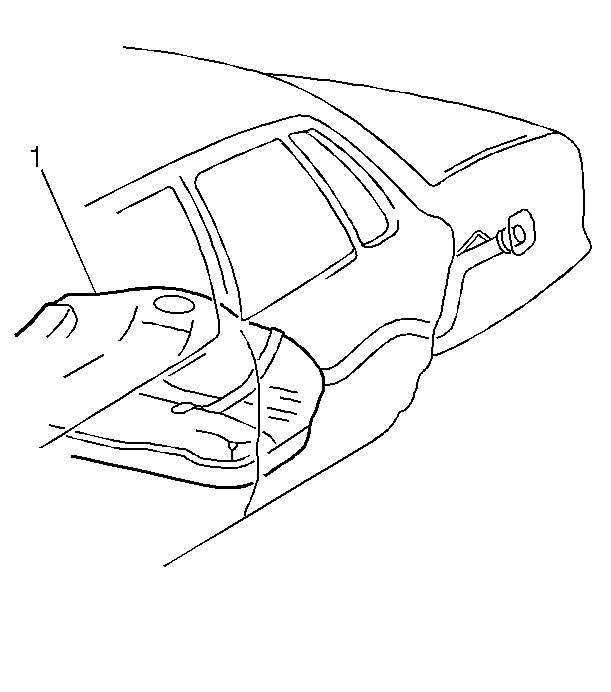In order to prevent refueling
with leaded fuel, the fuel tank filler pipe has a built-in restrictor and
deflector. The fuel tank filler pipe is connected to the fuel tank filler
extension by clamps.
The fuel tank filler pipe is equipped with a threaded-type fuel tank filler
pipe cap. The threaded part of the fuel tank filler pipe cap requires several
turns counterclockwise before it can be removed. A built-in torque-limiting
device prevents over tightening of the fuel tank filler pipe cap. In order
to install the fuel tank filler pipe cap, turn the fuel tank filler pipe cap
clockwise until at least 3 clicking noises are heard. The clicking noises
signal that the correct torque has been reached and that the fuel tank filler
pipe cap is fully seated.
The modular fuel sender assembly is attached to the top of the fuel tank,
and extends from the top of the fuel tank to the bottom.
The modular fuel sender assembly mounts to the opening of the plastic
fuel tank. The spring loaded reservoir. The design provides:
The fuel sender assembly consists of the following major components:
a fuel sender cover assembly (1), a fuel sender, fuel pipes (above cover)
(2), a fuel sender support assembly, a fuel pump, a fuel pump strainer, a
fuel pump reservoir (3), a external fuel sender strainer (4) and a fuel level
sensor (5).
The fuel sender is a ceramic card assembly that consists of the float, the
wire float arm, the rheostat and the roll-over valve. The fuel level is sensed
by the position of the float and float arm, which operates the rheostat.
The rheostat is mounted on the fuel sender and located in series with
the voltage supply circuit from the fuel guage. As the position of the float
varies with fuel level, the rheostat produces a variable resistance between
the fuel guage. The fuel guage converts this variable resistance into the
fuel level reading display on the instrument panel.
An isolated circuit is used in this application. The isolated ground
circuit uses a dedicated ground wire from the rheostat to the fuel sender
connector. The isolated ground circuit is used to prevent erratic fuel level
readings caused by a difference in voltage potential among vehicle ground
points. An isolated ground terminal is connected electrically to one end of
the ceramic card.
The function of the fuel sender strainer (1) is filter contaminants and to
wick fuel.
The roll-over valve is pressed into the EVAP pipe of the fuel sender
and is not serviced separately. The roll-over valve prevents fuel from entering
the engine compartment if the vehicle rolls over by shutting Off the EVAP
pipe to the evaporative emission canister.

